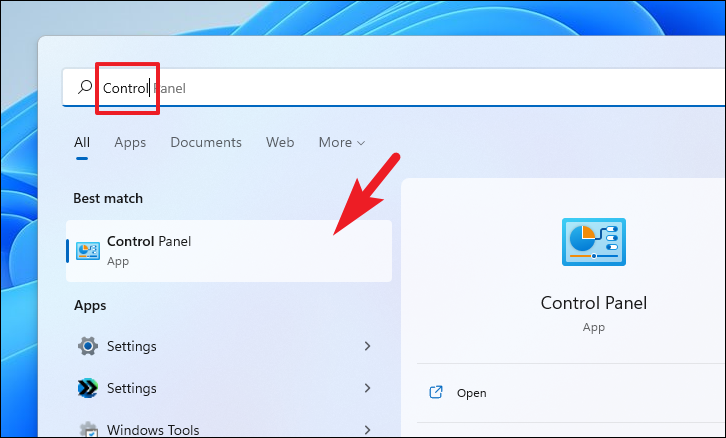How To Close Laptop And Use Monitor?

In a world where technology is constantly evolving, the versatility and convenience of our devices has become essential. For those who prefer to work or play on a larger screen, the ability to seamlessly transition from laptop to monitor is a game-changer. Whether you’re looking to increase productivity or simply optimize your viewing experience, learning how to close your laptop and utilize a monitor can elevate your digital lifestyle. This article will guide you through the process, making the transition smooth and effortless. So, grab your laptop and let’s dive into the world of dual-screen magic.
Related: Best & Cheap Laptop Repair Service in Oman
Optimizing Your Workspace: How to Close Your Laptop and Utilize a Monitor
In today’s digital age, having an optimized workspace is essential for maximum productivity. One way to enhance your workflow is by closing your laptop and utilizing a monitor. This simple yet effective technique allows you to take advantage of the larger screen real estate and improve your overall viewing experience.
Here are a few steps to help you seamlessly transition from using your laptop to utilizing a monitor:
- Connect Your Laptop to the Monitor: Start by connecting your laptop to the monitor using an HDMI or VGA cable. Make sure both devices are powered on and select the appropriate input source on the monitor.
- Adjust Display Settings: Once the connection is established, you may need to adjust the display settings on your laptop. Go to the “Display” settings in your operating system and select the option to extend your desktop to the monitor. This will allow you to use both screens simultaneously.
- Position Your Monitor: Place the monitor in a comfortable position on your desk. Ensure that it is at eye level and positioned at a distance that reduces strain on your neck and eyes. Consider using a monitor stand or an adjustable arm for optimal positioning.
- Utilize Window Management Tools: Take advantage of window management tools to make the most of your dual-screen setup. These tools allow you to easily move windows between your laptop screen and the monitor, resize windows, and organize your workspace efficiently.
- Customize Your Workflow: Experiment with different layouts and configurations to find the setup that works best for you. Consider dedicating specific tasks to each screen, such as using the laptop for research while using the monitor for writing or design work.
By closing your laptop and utilizing a monitor, you can significantly enhance your productivity and create a more immersive workspace. So, why limit yourself to a single screen when you can expand your view and accomplish more? Give it a try and experience the benefits for yourself. Happy optimizing!
Step-by-Step Guide: Closing Your Laptop and Connecting to a Monitor
Closing your laptop and connecting it to a monitor can provide you with a larger display and enhance your productivity. Follow these steps to seamlessly transition from your laptop screen to a monitor:
- Save your work and close all applications: Before closing your laptop lid, make sure to save any open documents, files, or projects you are working on. Close all applications to avoid any potential data loss.
- Connect the monitor: Locate the video output port on your laptop. Most laptops have an HDMI or VGA port, but some may require an adapter. Connect one end of the video cable to the appropriate port on your laptop and the other end to the corresponding port on the monitor. Ensure the cable is securely connected.
- Adjust display settings: Once the monitor is connected, you may need to adjust your display settings. On a Windows laptop, right-click on the desktop and select “Display settings.” From there, you can choose the display mode, resolution, and orientation that best suits your needs. On a Mac, go to “System Preferences” and select “Displays” to make the necessary adjustments.
- Close the laptop lid: Gently close the lid of your laptop. Some laptops automatically enter sleep mode when the lid is closed, while others may require you to manually adjust the power settings. Refer to your laptop’s user manual for specific instructions.
- Enjoy the extended display: Once your laptop lid is closed and the monitor is connected, you can enjoy the expanded workspace and improved productivity. Drag windows or applications to the monitor to take full advantage of the larger screen.
Remember, closing your laptop and connecting to a monitor can vary depending on the model and operating system of your laptop. Always refer to the manufacturer’s instructions for specific guidance. With these simple steps, you can effortlessly switch from your laptop screen to a monitor and enhance your computing experience.
Enhancing Productivity: Utilizing Dual Screens for Work and Play
One of the most effective ways to enhance productivity and maximize your workspace is by utilizing dual screens for both work and play. With the ability to connect an external monitor to your laptop, you can seamlessly transition between tasks and enjoy a more immersive experience. Here are some tips on how to close your laptop and make the most out of using a monitor.
First and foremost, make sure your laptop supports dual-screen functionality. Most modern laptops have a built-in HDMI or DisplayPort that allows you to connect an external monitor. Once you’ve confirmed compatibility, connect the monitor to your laptop using the appropriate cable. Depending on the model, you may need an HDMI, DisplayPort, or USB-C cable. Ensure that both your laptop and the external monitor are powered off before making the connection.
Once the connection is established, power on both your laptop and the external monitor. Your laptop should automatically detect the external display and extend the desktop. To optimize your dual-screen setup, adjust the display settings to your preference. In Windows, you can do this by right-clicking on the desktop, selecting “Display settings,” and adjusting the “Multiple displays” option. Here, you can choose to duplicate the screens, extend the desktop, or use the external monitor as the primary display.
Now that you have your dual-screen setup ready, you can start reaping the benefits. When working, you can have your main tasks and applications open on the external monitor while using your laptop screen for reference materials or communication tools. This allows for better multitasking and increased efficiency. For gamers and multimedia enthusiasts, the dual-screen setup offers a whole new level of immersion. You can play games or watch movies on the larger external monitor while using your laptop screen for chat windows, video playback controls, or browsing the web.
In conclusion, utilizing dual screens for work and play can significantly enhance productivity and provide a more enjoyable experience. By following the steps mentioned above, you can easily set up and optimize your dual-screen setup. Whether you’re a professional seeking a more efficient workspace or a gamer looking for a more immersive gaming experience, incorporating an external monitor into your workflow is a game-changer. So go ahead, close your laptop, and make the most out of using a monitor.
Troubleshooting Tips: Common Issues When Closing Your Laptop and Using a Monitor
One common issue that users may encounter when closing their laptop and using a monitor is the display not appearing on the external screen. This can be frustrating, but there are a few troubleshooting tips that can help resolve the problem.
First, double-check the connections between your laptop and the external monitor. Ensure that the cables are securely plugged in and that there are no loose connections. If the cables are connected properly and the issue persists, try changing the input source on the monitor to the correct one. This can usually be done through the monitor’s menu or settings.
Another common issue is the laptop not going into sleep mode or turning off when the lid is closed. This can be inconvenient, especially if you frequently use your laptop with an external monitor. To troubleshoot this problem, go to your laptop’s power settings and adjust the “lid close action” to the desired behavior. You can choose to have the laptop go into sleep mode, turn off completely, or do nothing when the lid is closed.
In some cases, adjusting the power settings alone may not solve the issue. If this is the case, you may need to update your laptop’s drivers or install any available software updates. These updates can often address compatibility issues and improve the overall performance of your laptop.
Remember, troubleshooting common issues when closing your laptop and using a monitor may require a bit of trial and error. Be patient and try these tips to resolve the problem.
To Conclude
In conclusion, knowing how to close your laptop and use a monitor can greatly enhance your productivity and comfort while working. By following the simple steps outlined in this article, you can seamlessly transition from using your laptop screen to a larger monitor without any hassle. So, go ahead and give it a try – you might just find that it revolutionizes the way you work!



